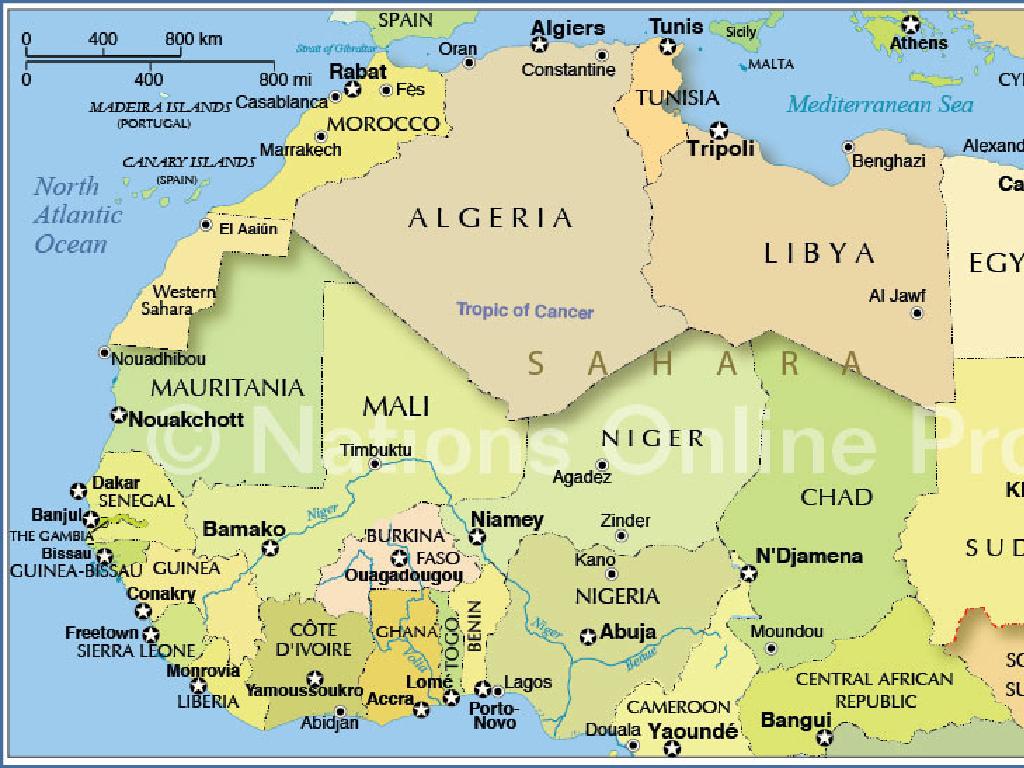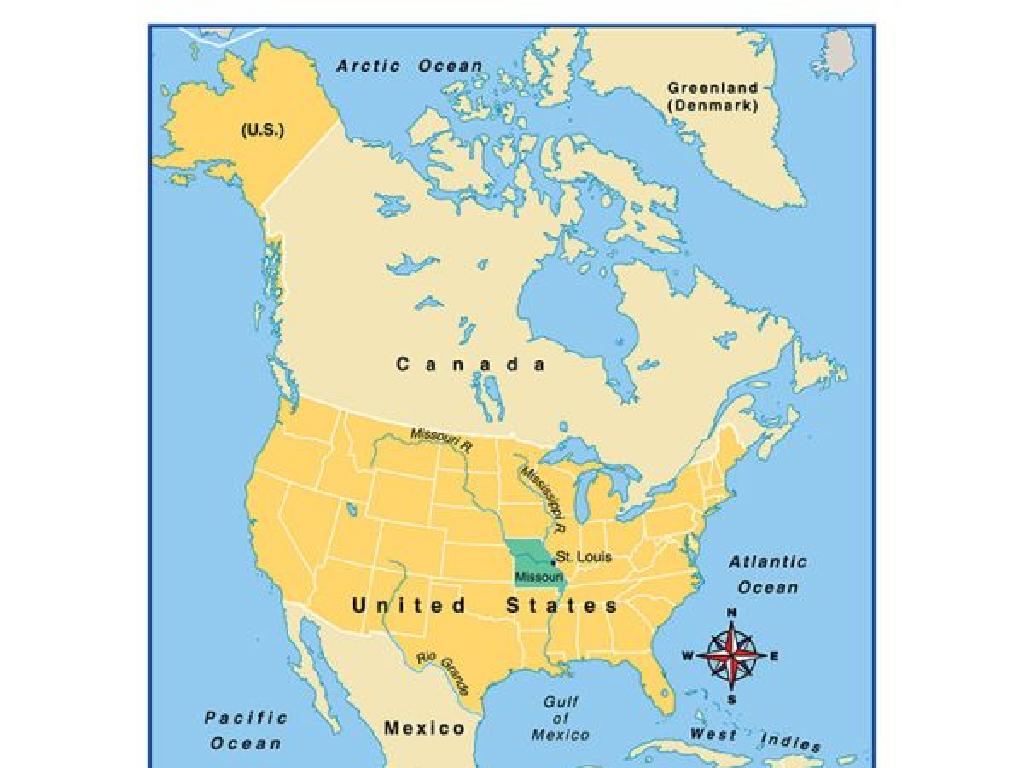Calculate The Percentages Of Traits In A Population
Subject: Science
Grade: Seventh grade
Topic: Adaptations And Natural Selection
Please LOG IN to download the presentation. Access is available to registered users only.
View More Content
Adaptations and Natural Selection: Trait Calculations
– Species adapt to environments
– Adaptation involves changes in traits for survival.
– Natural selection’s role in evolution
– Natural selection leads to evolution by favoring beneficial traits.
– Calculating trait percentages
– Use ratios to find the percentage of a trait in a population.
– Analyzing population genetics
– Helps understand the genetic diversity and health of a species.
|
This slide introduces the concept of adaptations and natural selection, setting the stage for understanding how species change over time to better survive in their environments. Emphasize the importance of natural selection as a driving force in evolution, where organisms with advantageous traits are more likely to reproduce. Today’s lesson will focus on calculating the percentage of specific traits within a population, which is a fundamental skill in studying genetics and evolution. Students will learn to apply mathematical ratios to real-world biological data, enhancing their comprehension of how traits are distributed in nature and the significance of genetic variation.
Understanding Traits in Populations
– Define a biological trait
– A trait is a characteristic of an organism, e.g., flower color or beak shape.
– Traits in plants and animals
– Examples: Leaf shape in plants, fur color in animals
– Inherited vs. acquired traits
– Inherited traits are passed from parents, acquired traits develop from environmental influences.
– Calculating trait percentages
|
This slide introduces the concept of traits within the context of adaptations and natural selection. A trait is a specific characteristic of an organism that can vary from one individual to another. Provide examples of both plants and animals to illustrate the concept. Explain the difference between inherited traits, which are genetic and passed down from parents, and acquired traits, which are gained during the organism’s life due to environmental factors. Emphasize the importance of understanding how to calculate the percentage of certain traits in a population as it relates to the study of genetics and evolution. This foundational knowledge will help students grasp more complex topics in genetics and evolutionary biology.
Variation in Traits: Genetic Diversity & Environment
– Causes of trait variation
– Genetic mutations, sexual reproduction
– Genetic diversity’s role
– Diversity leads to a healthier population
– Environment’s impact on traits
– Traits can change due to climate, food, predators
– Calculating trait percentages
|
This slide aims to explain the concept of variation in traits within a population, which is a cornerstone of understanding adaptations and natural selection. Variation arises from genetic mutations and the process of sexual reproduction. Genetic diversity is crucial as it allows populations to adapt to changing environments and resist diseases. Environmental factors such as climate, availability of food, and predator presence can also influence the expression of traits. Students will learn how to calculate the percentage of certain traits in a population, which will help them understand the frequency and distribution of traits that contribute to the survival and evolution of species. Provide examples and encourage students to think of traits in animals and plants that might be affected by their environments.
Natural Selection and Evolution
– Darwin’s theory of natural selection
– Charles Darwin proposed organisms better adapted to their environment tend to survive and produce more offspring.
– ‘Survival of the fittest’ concept
– The phrase means the best-suited traits for survival are passed on more frequently.
– Natural selection’s role in evolution
– Over time, advantageous traits become more common in the population, leading to evolutionary changes.
– Calculating trait percentages
– Use population data to determine the frequency of certain traits.
|
This slide introduces the concept of natural selection as a key mechanism of evolution, first proposed by Charles Darwin. It explains how individuals with traits that are better suited to their environment are more likely to survive and reproduce, passing those traits on to the next generation. Over time, this process can lead to significant changes in the population, which is the essence of evolution. To make this concept tangible for seventh graders, encourage them to calculate the percentage of certain traits in a given population, reinforcing the idea that traits that confer a survival advantage become more common over time.
Calculating Trait Percentages in Populations
– Understanding percentages
– A percentage represents a part of a whole divided into 100 equal parts.
– Calculating trait percentages
– To find the percentage of a trait, divide the number of individuals with the trait by the total population, then multiply by 100.
– Real data application
– Use data from a study or experiment to calculate the trait percentages in a real population.
– Importance of percentage in genetics
|
This slide introduces the concept of percentages in the context of genetics and population studies. Begin by explaining what a percentage is and how it is a useful way to express proportions. Then, demonstrate the method to calculate the percentage of a specific trait within a population, which is a fundamental skill in genetics for understanding how common or rare certain traits are. Using real data, such as the frequency of a trait in a classroom or a known study, will help students grasp the concept with practical examples. Emphasize the significance of these calculations in the study of genetics, adaptations, and natural selection, as they allow scientists to predict and understand trait distribution in populations over time.
Activity: Classroom Trait Survey
– Conduct a survey on a common trait
– Collect data on the trait presence
– Calculate trait percentage in class
– Use the formula: (number with trait / total students) * 100
– Discuss the findings together
– Why do you think this trait appeared in the percentage it did?
|
This class activity is designed to give students hands-on experience with calculating the percentage of a specific trait within their classroom population. Start by selecting a common trait that can be easily observed, such as attached earlobes, tongue rolling, or hair color. Have students survey each other to collect data on who does and does not have the trait. Then, guide them through the process of calculating the percentage using the provided formula. This will help them understand how traits are distributed in a population and introduce them to the concept of frequency and probability in genetics. After calculations, lead a discussion on the potential reasons for the observed distribution, linking it to the broader topics of adaptations and natural selection. This will help students grasp the practical implications of genetics in everyday life and the natural world.
Applying Knowledge: Population Trait Analysis
– Analyze real animal population data
– Use data on a specific animal species to observe trait distribution
– Calculate trait percentage
– Determine the frequency of a trait and convert it to a percentage
– Discuss population implications
– How does the trait’s prevalence affect the species’ survival and adaptation?
– Predict future trait changes
– Based on current data, forecast how the trait might evolve or change
|
This slide aims to apply the concepts of genetics and heredity to real-world scenarios by analyzing data from an actual animal population. Students will learn how to calculate the percentage of a specific trait within a population, which is a critical skill in understanding genetics and evolution. They will also discuss how the prevalence of certain traits can influence the future of a species, considering factors like environmental changes and natural selection. This exercise will help students grasp the practical implications of heredity and the dynamic nature of gene frequencies in populations over time. Encourage students to think critically about how traits can provide advantages or disadvantages in different environments and how this can lead to changes in the population.
Be the Scientist!: Trait Analysis
– Group activity: Identify animal traits
– Calculate trait percentages
– Use formula: (number of individuals with a trait / total population) x 100
– Present findings to class
– Discuss survival impact
– How might these traits influence natural selection?
|
This class activity is designed to engage students in hands-on learning about genetics and natural selection. Divide the class into small groups and provide each with data or images of a specific animal population. Students will identify various traits within the population, such as fur color, beak size, or foot type. They will then calculate the percentage of each trait using the provided formula. After calculations, each group will present their findings to the class, fostering a discussion on how these traits could affect the population’s survival and influence natural selection. Possible activities: 1) Bird beak variation and food sources, 2) Insect camouflage and predator avoidance, 3) Flower color and pollinator attraction, 4) Fin shapes in fish and swimming efficiency. This exercise will help students understand the role of traits in survival and reproduction.
Recap: Trait Percentages & Biodiversity
– Reviewing trait percentages
– Natural selection’s role
– Traits that aid survival become more common
– Biodiversity understanding
– Trait variety contributes to species survival
– Next lesson: Adaptations
|
This slide aims to summarize the key concepts learned about calculating trait percentages and how natural selection influences these percentages in a population. Emphasize the importance of natural selection in shaping the traits that become more common within a population, leading to a diverse array of characteristics that can improve the chances of survival in changing environments. This understanding is crucial for students to appreciate the complexity of biodiversity. Looking ahead, the next lesson will delve into specific adaptations that organisms have developed, providing a segue into more detailed discussions on how species have evolved to fit their niches.
Homework: Trait Percentages in Populations
– Find a natural population example
– Estimate trait percentages
– Use observation or research to estimate how common a trait is in the group
– Explain traits as adaptations
– How does the trait help survival? E.g., camouflage in rabbits
– Document your findings
|
This homework assignment is designed to help students apply the concepts of adaptations and natural selection to real-world examples. Students should select a population in nature, such as a group of animals, plants, or even bacteria, and focus on a specific trait within that population. They will estimate the percentage of individuals exhibiting the trait and write an explanation of how the trait may provide an adaptive advantage, contributing to the organism’s survival and reproduction. Encourage students to consider environmental factors and predators when analyzing how a trait functions as an adaptation. This exercise will enhance their understanding of the role of natural selection in shaping the traits of populations.





